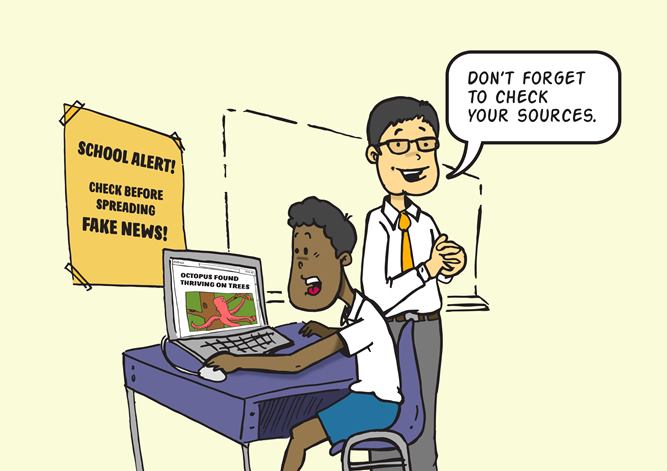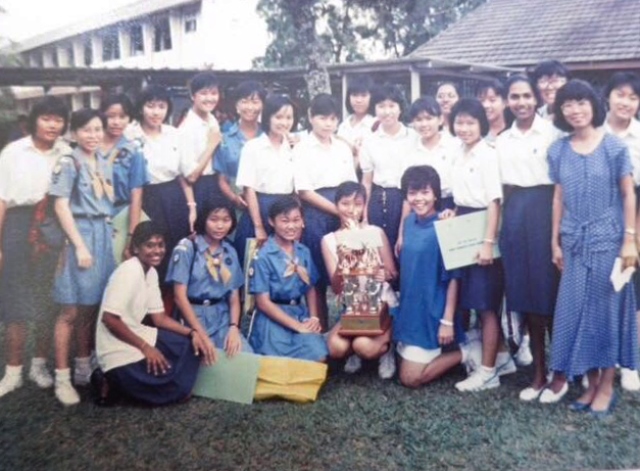Getting to the can-do mindset
01 Apr 2020

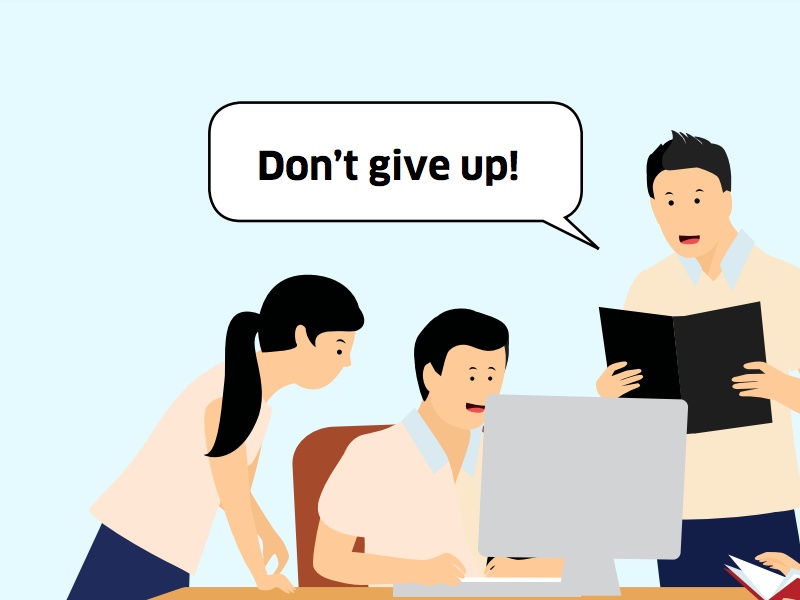
Everybody can be motivated. The key lies in helping students adopt a positive attitude and unlocking their potential.
We have all seen restless students in class. And we know classroom disruptions can happen – and multiply – if a student who is popular with peers does not cooperate with the teacher and influences their classmates to do the same.
But think about it: isn’t this ability – to inspire people to follow – something we look for in leaders? And if teachers can turn such students around to lead and influence their friends positively, “ringleaders” can be valuable assets in classrooms.
Dr Dennis Kom, Lead Specialist from MOE’s Guidance Branch, believes such turnaround cases are possible. “Even a delinquent can be a motivated student – though that may not be motivation in a socially acceptable way,” explained Dr Kom.
“So the ‘trick’ here is how the school, community and family can turn the motivation in a more pro-social direction.” This is why some teachers take the chance to give the ringleader-type student leadership responsibilities, such as by making them class representative, he added.
“The teacher is giving these students an opportunity to exercise his strength in a pro-social context, allowing him to contribute positively. And we have seen such students turn around in many instances because they realise that they can be a positive influence.”
Mindset is crucial
Students can lose motivation for their studies or school for several reasons. They may have started out as enthusiastic learners but been discouraged by setbacks along the way.
Or they may have had little academic success and are convinced they are not cut out for school, and feel they are being forced to complete tasks that do not appeal to them at all. But there are no “unteachable” students. It boils down to their attitude and not just aptitude.
Stanford psychologist Prof. Carol Dweck, one of the world’s leading researchers in the field of motivation, believes that students adopting the right mindset is key to keeping them motivated. Her research discusses two types of mindsets: growth and fixed.
She found that people with a growth mindset are able to embrace challenges and persist even when they fail. They believe in putting in effort to achieve mastery, learn well from criticism, and find lessons in the successes of others.
Individuals with a fixed mindset avoid challenges, give up easily, do not believe that working hard pays off, and feel threatened when they see others doing well. This results in them often not reaching full potential.
Commenting on the growth mindset, Dr Kom said: “The truth is we can always become better with effort. If you practice something over and over again, you will quite naturally get better at it.”
For those with a fixed mindset, they tend to believe that if they are not born with a talent, there is no point trying – so they stop putting in effort.
“Take singing as an example. Those with a fixed mindset will believe that if someone is born with little talent in singing, then that is it,” he added.
“However, even if I am not a natural singer, if I work hard, I will sing better than I do currently. Previously, I might ‘croak like a frog’, but with effort, at least I’ll be able to sing a tune that you can understand. Having a growth mindset can help make this difference.”
Celebrating small victories
Students must see what they are learning in school as useful, meaningful and relevant.
“If a student is interested in being a beautician, they may not see why they have to go through English or History,” explained Dr Kom. “But perhaps we can explain to them that Science is important because they will be dealing with some chemicals.”
While education and career guidance counselling can help students get a clearer sense of their aspirations and connect textbook concepts with reality, he acknowledged that it can still be challenging for teachers to help students join the dots. In such cases, teachers’ relationships with their students are key.
“Some students, once you get them to trust you, they will work hard for you. They may not see the relevance of studying but because of the class culture and rapport with the teacher, they will say ‘Let’s do it’,” he noted.
Ultimately, there is no shortcut to motivate students. It is simply about making students feel valued, supported and respected.
And teachers play a crucial role in helping students adopt the right mindset. They can create the right conditions in the classroom that nurture motivation. Basically, it is about celebrating small steps. If a student used to skip school thrice a week, but is now missing only a day of lessons, that small achievement deserves recognition even as the monitoring of the student’s attendance continues.
Teachers can seize such moments and let students experience small successes. Such moments can motivate students to never give up on themselves and realise they are capable of improving.
Troublemaker or role model, every student can be motivated to do better.
Expanding young minds
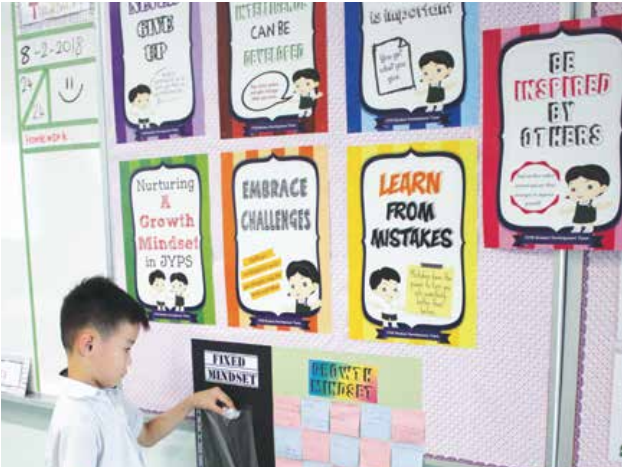 Students write notes about growth and fixed mindsets to learn about them. Photo from Juying Primary School
Students write notes about growth and fixed mindsets to learn about them. Photo from Juying Primary School
Juying Primary School believes in nurturing a growth mindset early.
To make it easy for young children to understand the concept, the student development team used a mixture of pop songs, children’s movies and videos, and assembly talks to seed the idea.
For instance, students watched a short clip from the Disney movie Zootopia and learnt how Judy, a small rabbit, overcame the odds to become an upstanding policewoman in a police department filled with lions, tigers, huge buffaloes and rhinos.
Pop singer Bruno Mars’ song, Don’t Give Up, with lyrics such as “Don’t ever quit, try and try and you can do it, don’t give up”, was also played at recess time.
Students were encouraged to write out their thoughts about both mindsets on sticky notes. Then, they pinned notes with growth mindset messages on the class noticeboard, while fixed mindset statements were crumpled up and dumped into a box.
“If we had just taught them the theory about growth mindset, I don’t think we would be able to engage them,” said Madam Nitthiya Rengasamy, Year Head (Lower Primary), who is also part of the student development team.
“But we broke down the concept into these ageappropriate activities for them and showed them how it is applicable in all situations.”
Your voice IS heard
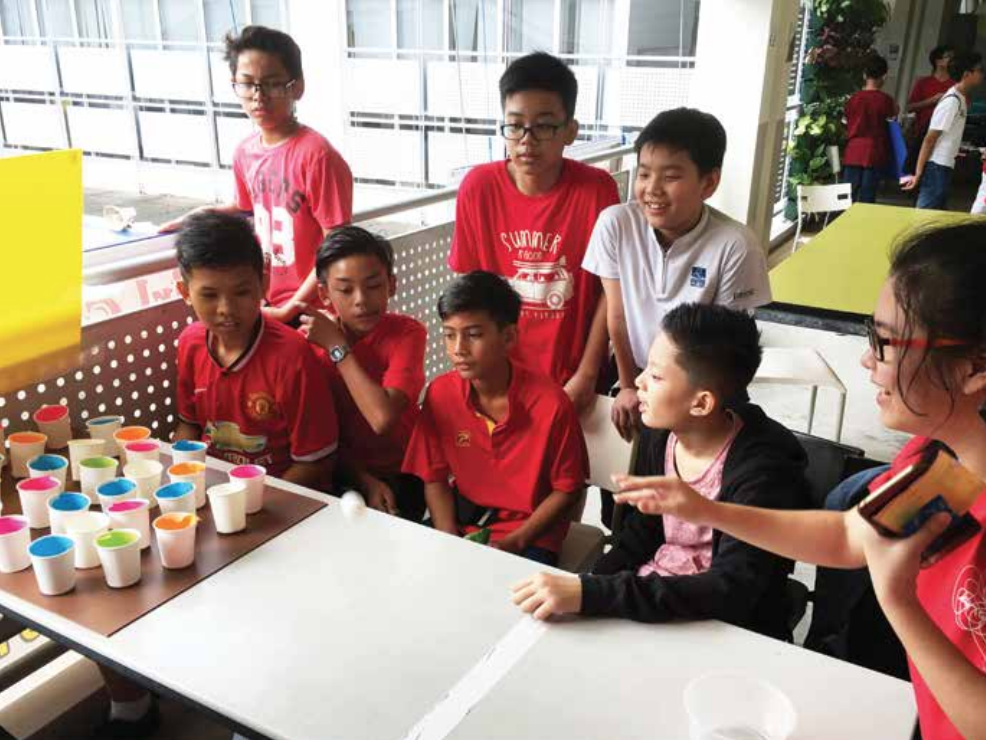
Serangoon Garden Secondary School took onboard its students’ suggestion to organise a school carnival. Photo by Serangoon Garden Secondary School
At Serangoon Garden Secondary, the school gives students the opportunity to shape their learning environment. It runs a school-wide forum once a year (mass-assembly style) where students are invited to give feedback about what they would like to see in school.
Students have asked if they could wear sports shoes to school, as the right footwear helps them perform better during PE lessons. They also wanted to know if the school could build recreational rooms, so they could stay back after school to hang out and relax with their friends. Students also asked to revive an old tradition of the school organising a carnival.
The school staff take onboard the feedback after the annual forum. School rules were tweaked to allow students to wear sports shoes, with guidelines on colours and style. Recreational rooms with Xbox consoles, pool tables and board games were also added.
And students were tasked to think of booths and activities for the school carnival, and get hands-on with the planning. The proceeds collected from the funfair went to needy students in the school.
Ms Tay Hui Yih, Year Head (Lower Secondary) said: “We are trying to develop our students’ voices during the forum. We definitely cannot accede to every request our students have. But we make it a point to get back to students to explain why something cannot be done.”
A version of this article was originally published in Issue 29 of “Contact: The Teachers’ Digest” with the headline “Getting to the can-do mindset”.


.jpg)

